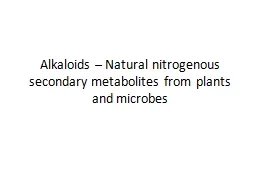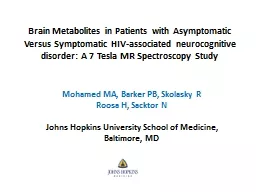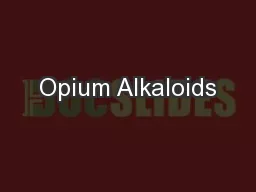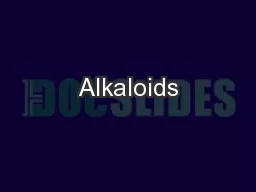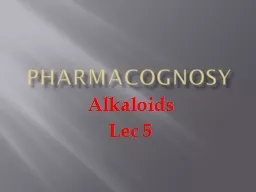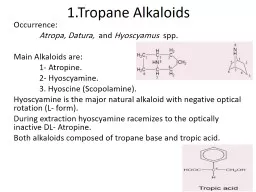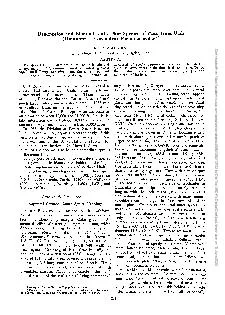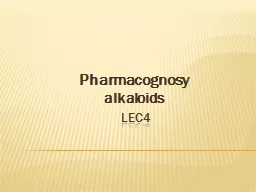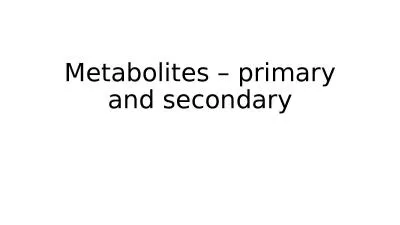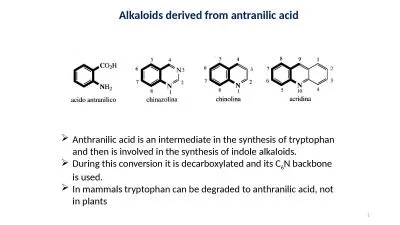PPT-Alkaloids – Natural nitrogenous secondary metabolites fro
Author : lindy-dunigan | Published Date : 2015-11-26
Some important classes of alkaloids Class Precursors Examples Piperidine alkaloids Llysine C 5 N Piperine Pyrrolidine tropane alkaloids L ornithine
Presentation Embed Code
Download Presentation
Download Presentation The PPT/PDF document "Alkaloids – Natural nitrogenous second..." is the property of its rightful owner. Permission is granted to download and print the materials on this website for personal, non-commercial use only, and to display it on your personal computer provided you do not modify the materials and that you retain all copyright notices contained in the materials. By downloading content from our website, you accept the terms of this agreement.
Alkaloids – Natural nitrogenous secondary metabolites fro: Transcript
Download Rules Of Document
"Alkaloids – Natural nitrogenous secondary metabolites fro"The content belongs to its owner. You may download and print it for personal use, without modification, and keep all copyright notices. By downloading, you agree to these terms.
Related Documents

